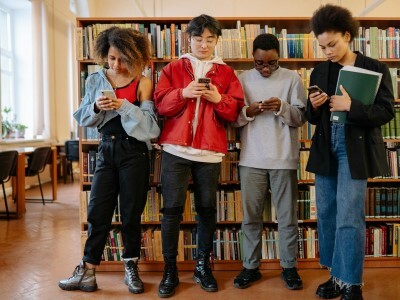AI and Special Education: Mitigating Bias and Improving Support for Learners
Topics

Educators often take advantage of educational technologies as they make the shifts in instruction, teacher roles, and learning experiences that next gen learning requires. Technology should not lead the design of learning, but when educators use it to personalize and enrich learning, it has the potential to accelerate mastery of critical content and skills by all students.
Despite the inherent bias in generative AI tools, thoughtful special educators can use them to help develop and provide accommodations and modifications for learners with 504 plans and on an IEP.
It’s been over a year since the first time I heard of a school district that allowed a student on an IEP to use Large Language Models (LLM), like ChatGPT, as an assistive technology to meet their accommodations. I had contemplated the possibility only a few weeks before I actually heard that it was happening.
It shouldn’t have surprised me as much as it did, but it’s still something I think of often. On a regular basis I hear people say that we should allow learners to use LLM for brainstorming and for other aspects of the early writing process. Admittedly, I’ve written a number of posts about using LLM to support struggling learners and for using them to make accommodations and modifications to curriculum. I’d like to think I offer a more nuanced approach than the “have the AI do it for you!”-type message that I see in social media posts and vendor presentations.
In the field of education, it seems we are so quick to want to look to technology as a solution. In my career I’ve experienced the controversy and adoption of spell/grammar check, Google Apps, the Web 2.0 revolution, iPad and Chromebook rollouts, and more. My inclination to see what all the fuss is about with each new technology led to me spending some time as a tech integration specialist in an alternative setting that primarily served students receiving Special Education services. I learned something very quickly from that experience with new software solutions and tools–accessibility is often an afterthought and no technology seems to support marginalized communities by default. So is there anything different about LLM? Not really. We created all kinds of systemic inequities the moment those tools hit the public and the inequities continue to develop.
In this case, however, there are things that thoughtful educators can do to support learners with 504 plans and on an IEP. Learners who are entitled to accommodations and modifications. It’s not a one click solution and requires some layered approaches and mindful consideration, but I would argue that it’s still worth integrating into your practice. These suggestions range from the simple to the complex. Above all, what I want from LLM is not to replace teachers’ thinking and expertise, but to assist us in tasks. I understand the reality of the classroom teacher, especially Special Education teachers who have too many students on their case load and not enough time to provide the kind of detailed support that might be needed while working with the general education teachers serving those learners.
Saving Time with Accommodations
I spent hours rewriting the Minnesota Manual of Accommodations to alter the suggestions it provided to support students in online learning settings. This was before LLM were readily available. I could now upload a document like that to get a series of suggestions in minutes that I could then edit in less time.
The same type of workflow could be done by pasting instructional content along with a list of accommodations to receive suggestions for which approach might work best for that learner. About a decade ago, I worked with a specialist for the blind and visually impaired who was supporting a 7th grader in her six courses. None of the material was accessible and they were designed for iPads. This person was spending 30 hours a week making alterations to content! That’s definitely not sustainable, and it doesn’t lead to solutions and improvements that would make those courses more accessible for future learners who may need those same accommodations. If only we’d had LLM back then to help complete some of that work.
What are the most common accommodations or modifications that you are making? Think about this common list of accommodations and how asking a LLM for content revisions based on the accommodation could speed up your workflow.
Access to notes/prior content
Step-based directions/break up content
Reduced number of assignments (focus on mastery/standards)
Self-quizzing/increased review options
Immediate feedback
Readability/Supports for engaging texts at grade level
Chunking (distinct units of information)
Headings
Calling out key words by using bold/italics (caution)
Ordered lists
Summaries
Reduced choices (choice can paralyze; choice overload)
Clear/Specific directions
Step based directions
Accessibility of Digital Curriculum
Accessibility is one of those topics that most teachers do not receive much, if any, training on, but for those writing digital curriculum it’s something they need to be aware of. A teacher could paste a lesson into a LLM and ask for suggestions for WCAG 2.1 AA compliance and receive a series of suggestions. They can ask for the best suggestions to be rewritten into HTML so a teacher can paste it into their LMS or digital content. This would work especially well with some guidance on using descriptive hyperlinks.
Inclusion with Anti-Bias Prompts
LLM are essentially bias engines. They don’t really work if they aren’t. It’s up to the user to understand this about them and redirect and focus on aspects of the LLM training that will result in more inclusive responses. Try it yourself: tell it your name is Robert and you are a teacher in Chicago and ask for a lesson on a topic; then in another chat, tell it your name is Laura and give it the same prompt to see the difference. Try it with location. You get the idea. The LLM algorithm identifies any aspect of your identity that it can to generate more sycophantic responses because that is the top indicator of human preference. It also leads to problems of bias. Consider how large you can make your sphere of inclusion through your prompting by incorporating statements like these:
Incorporate multiple perspectives that span race, gender, ability, culture, sexuality. Include anti-racist examples, inclusive language that demonstrates care and encouragement.
Reflect on the importance of reducing cognitive load, enhancing navigational ease in online learning, and demonstrating care through warm demander pedagogy to build trust and foster student engagement.
I expect responses that are insightful, bias-free, and rich in reasoned analysis. Your answers should be factual, nuanced, and contextualized, demonstrating a deep understanding of culturally responsive curriculum, SEL, and UDL principles. Use inclusive language and provide clear explanations, leveraging analogies and metaphors to enhance understanding.
When addressing lesson planning and assessments, focus on strategies that engage students through diverse, multimodal learning experiences, tailored to an asynchronous, online setting without group work. Your recommendations should facilitate deep, meaningful learning, considering the cognitive load and the importance of navigational ease in online environments.
Avoid simplifying complex educational debates or endorsing disproven educational myths like learning styles and left/right brain thinking. Your advice and insights are crucial to my work, helping me to continually improve and make a meaningful impact on my students' learning journey.
Using Handouts as Guiding Principles in LLM Discussions
I create handouts that I can upload to LLM that will serve as guiding principles for that chat to improve the quality of results the LLM provide. I use accessibility guides, demographic information, SEL and UDL handouts, previous examples and ideas, etc. Handouts are a great way to speed up the process and keep the LLM focused.
Other Means of Support
When I have met with students, or they have reached out to me, they very often raise issues that are not even related to the content of my course. For example, while talking to a learner who was in a bit of a crisis and full of anxiety about their workload and schedule, I used a LLM for ideas for how to break down a long assignment. I reviewed the list the LLM generated and made suggestions to the student based on what I thought he’d be open to in that moment. I was able to de-escalate the situation and help create a checklist that was manageable for the student.
Back to the common example of students using LLM for brainstorming and prewriting. I have seen students struggle when staring at the blank page. The anxiety level rises which prevents any type of creative process. I understand the urge to provide comfort and aid. But, what if instead of a student asking a LLM for a list of topics, we teach that learner to have the LLM to prompt them? I’ve written a handout for how to set up a GPT as a coach with the prompt guidance for this kind of use.
This approach is about using the LLM as an assistant, thought partner, collaborator where you are still the one in control. You are the professional making the ultimate decisions, but now there is some support. I recommend having conversations with colleagues about these types of uses and others that they have found useful. Share your prompts. What’s working? What isn’t?
Note: I hope it goes without saying, but I’m going to say it anyway...when using LLM de-identify student work before pasting; use district-approved tools; disable training on user data if possible; avoid entering PII/health details, etc. You get the idea.
Photo at top of a special education teacher with a student, courtesy of Two Rivers Public Charter School.




